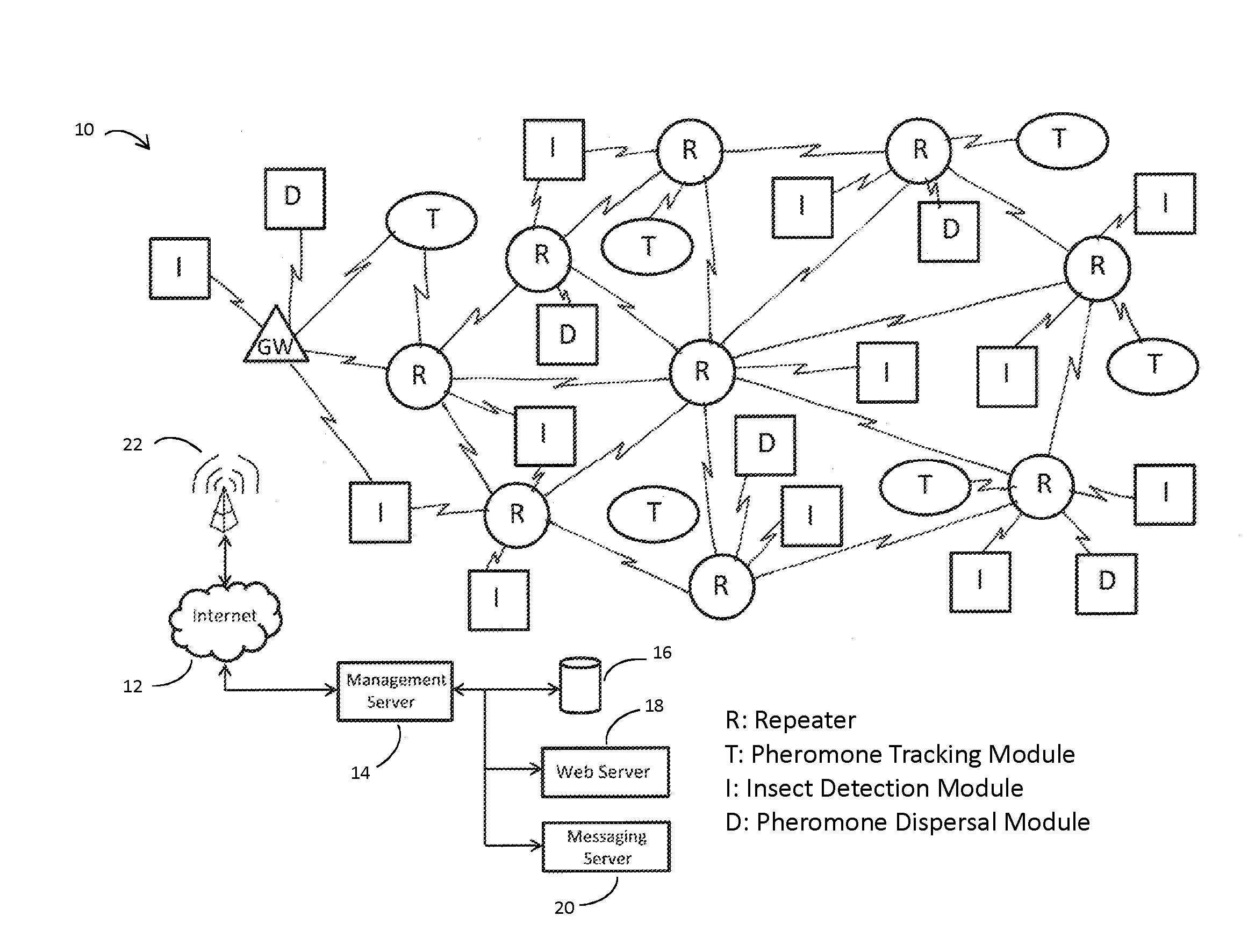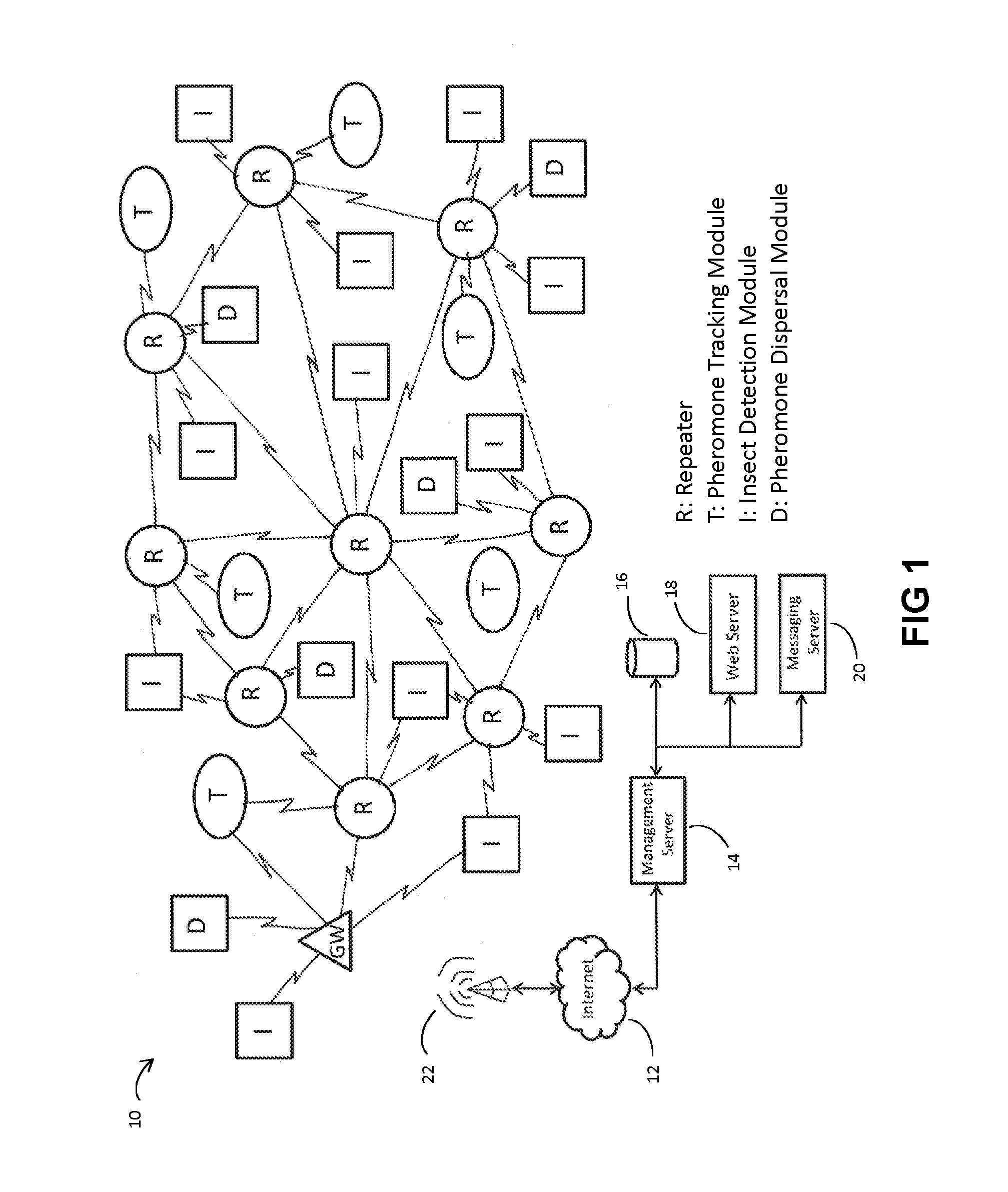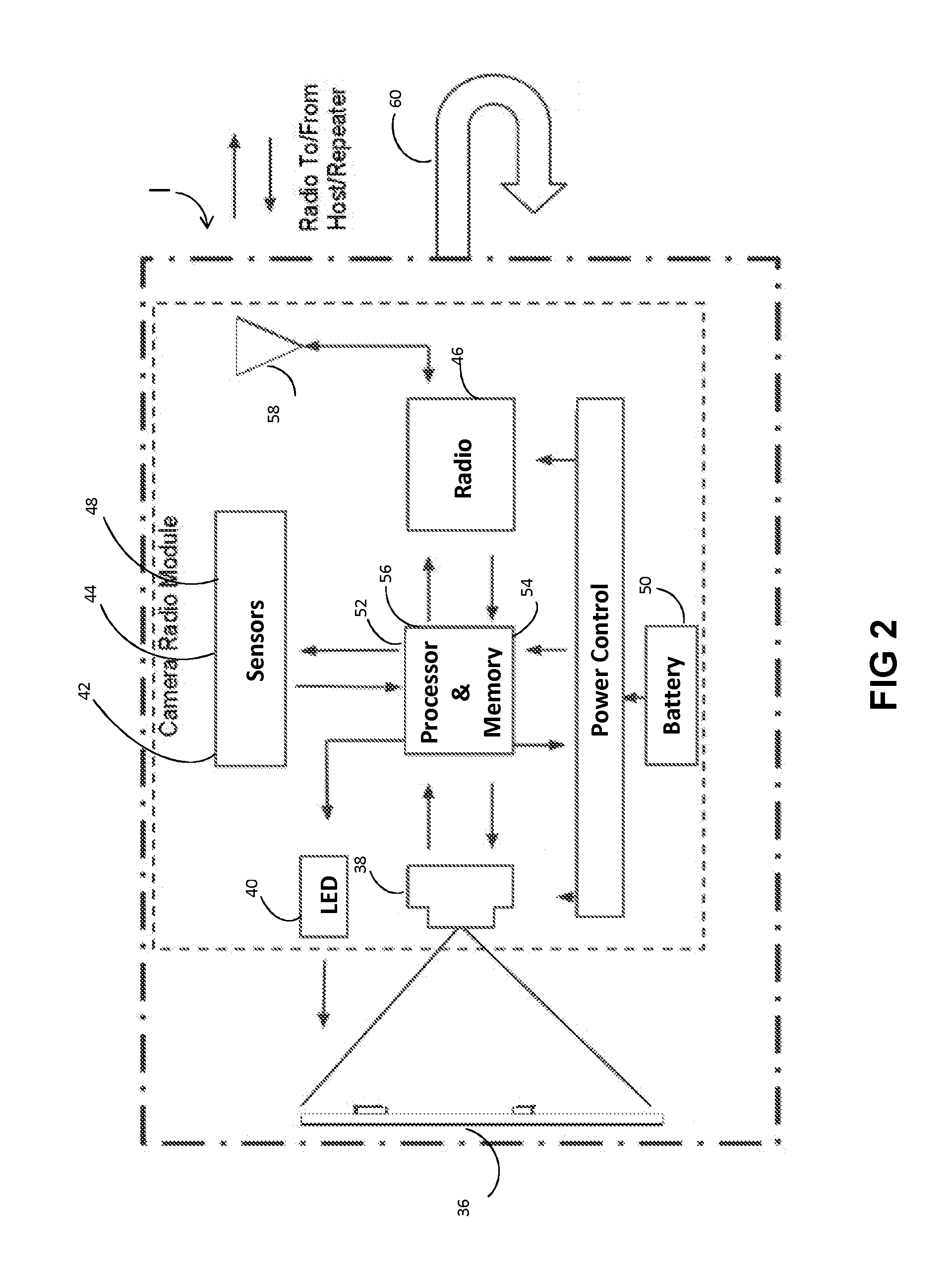Monitoring and Control Systems for the Agricultural Industry
a technology for monitoring and control systems in the agricultural industry, applied in the field of precision agriculture, can solve the problems of affecting the performance of the network, affecting the success of the sensor network over the relatively large area covered by the farm, and the number of sensor nodes in the network is large, so as to achieve effective management
- Summary
- Abstract
- Description
- Claims
- Application Information
AI Technical Summary
Benefits of technology
Problems solved by technology
Method used
Image
Examples
Embodiment Construction
[0037]The preferred embodiment of the monitoring and control system of the invention will be described by reference to an insect management system.
[0038]FIG. 1 provides an overview of the system network 10 as deployed in relation to an agricultural production area. In the preferred illustrative embodiment, the production area is an orchard. The Internet represents what is now commonly referred to as the “cloud”. It should also be appreciated that although the figure shows three types of sensor and actuation modules (namely pheromone tracking modules T, insect detection modules I and pheromone dispersal modules D), other types of sensor and actuator modules may actually be used in a similar network. In addition, the figure does not separately illustrate the weather modules that are mounted along with the repeaters in the preferred embodiment, as discussed in more detail below.
[0039]A plurality of insect detection modules I are arrayed throughout the orchard, including within and unde...
PUM
 Login to View More
Login to View More Abstract
Description
Claims
Application Information
 Login to View More
Login to View More - R&D
- Intellectual Property
- Life Sciences
- Materials
- Tech Scout
- Unparalleled Data Quality
- Higher Quality Content
- 60% Fewer Hallucinations
Browse by: Latest US Patents, China's latest patents, Technical Efficacy Thesaurus, Application Domain, Technology Topic, Popular Technical Reports.
© 2025 PatSnap. All rights reserved.Legal|Privacy policy|Modern Slavery Act Transparency Statement|Sitemap|About US| Contact US: help@patsnap.com



